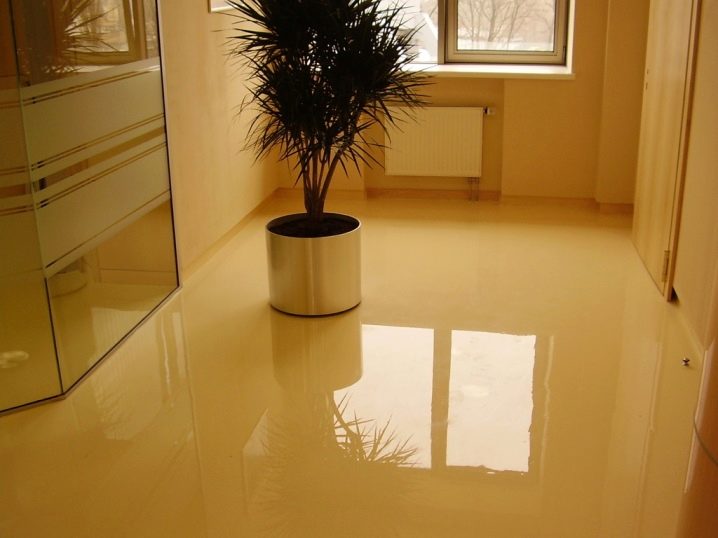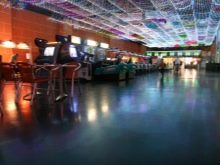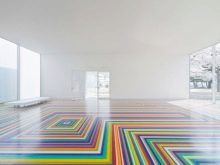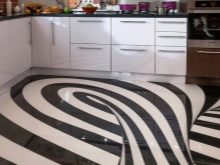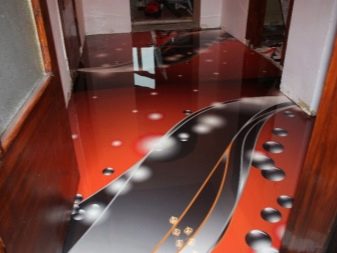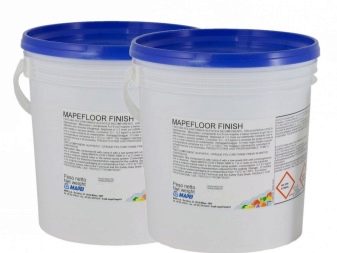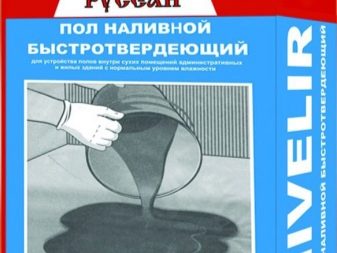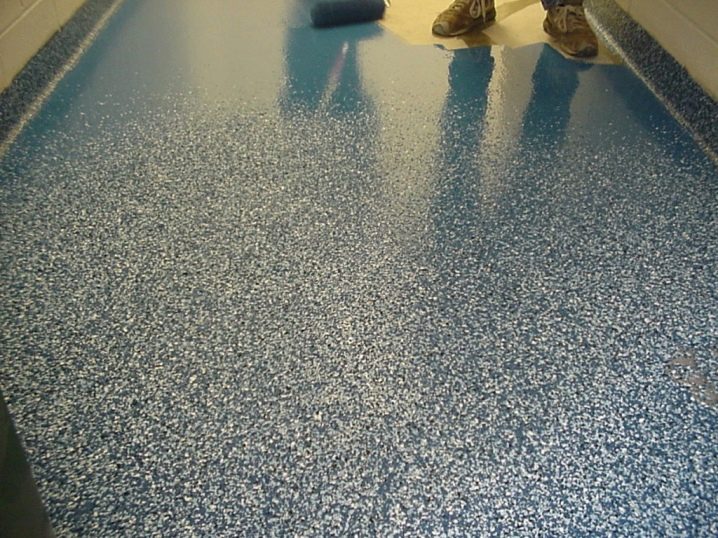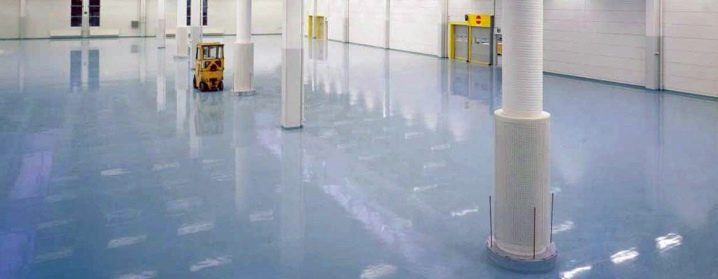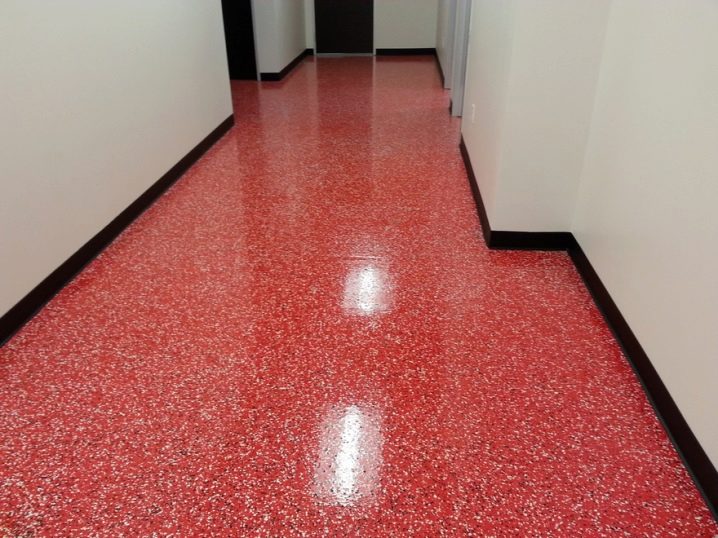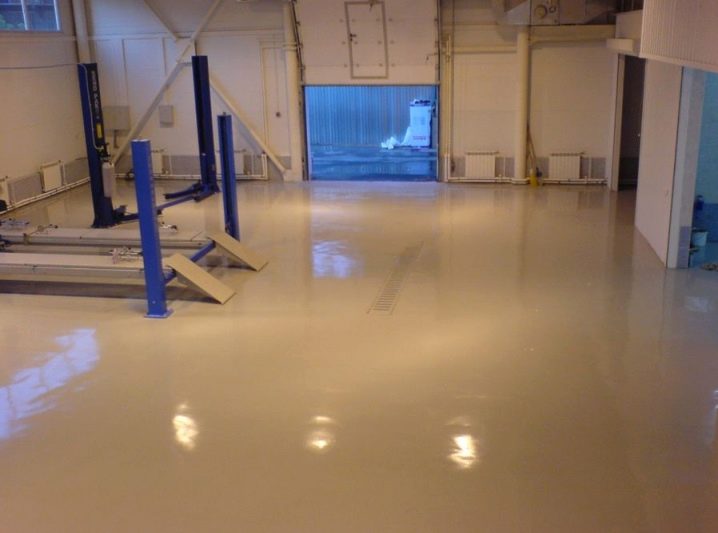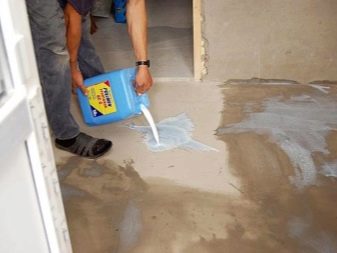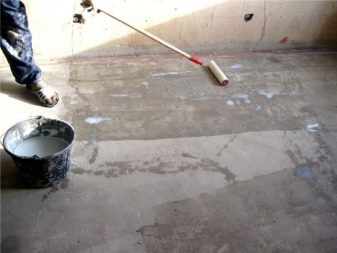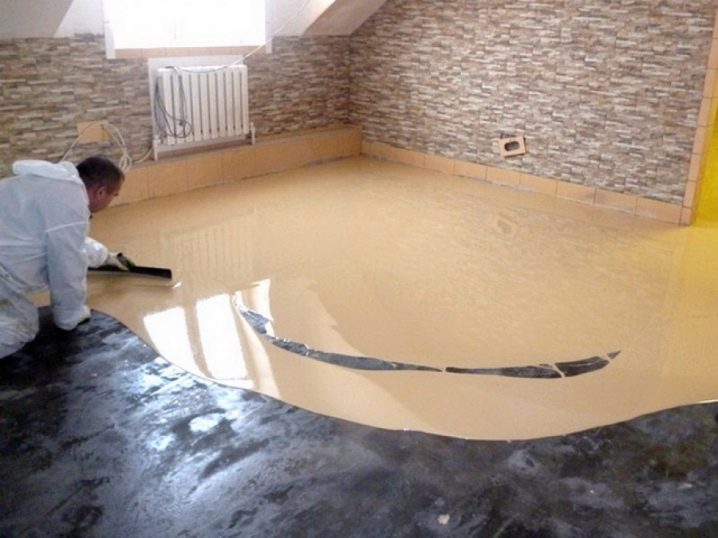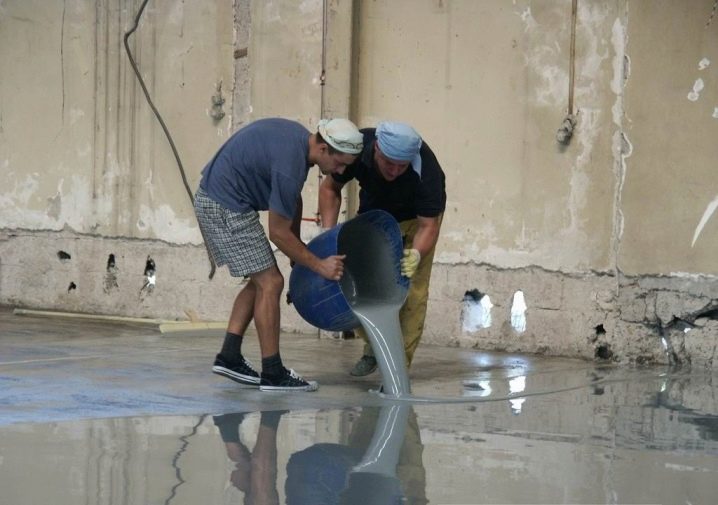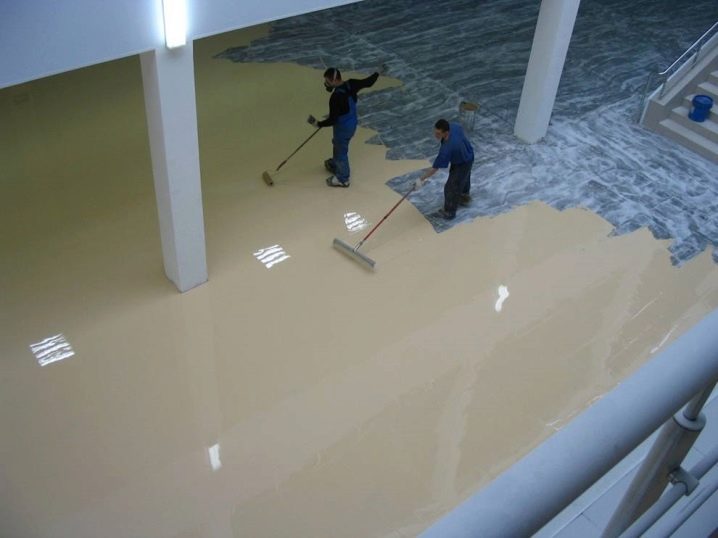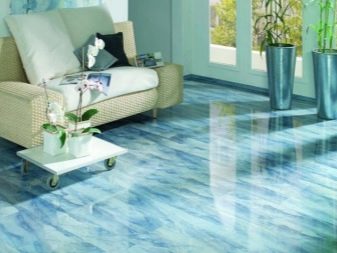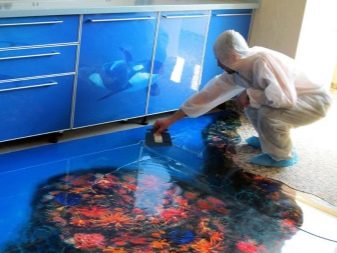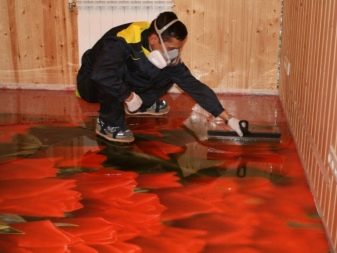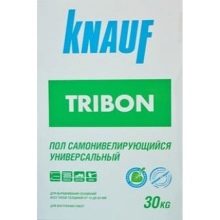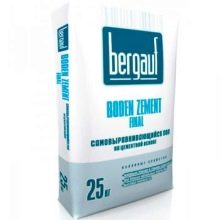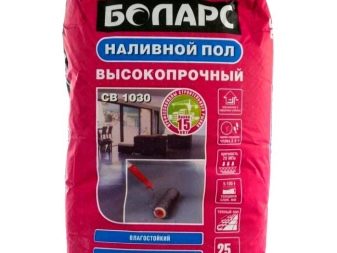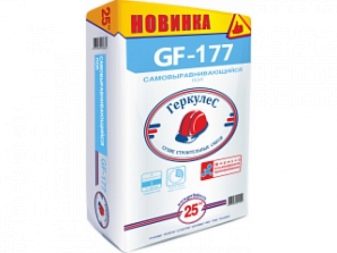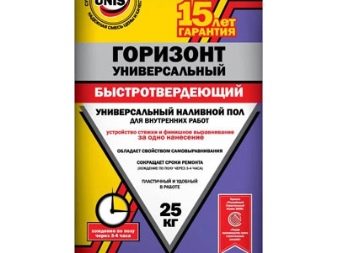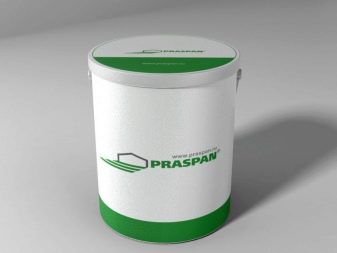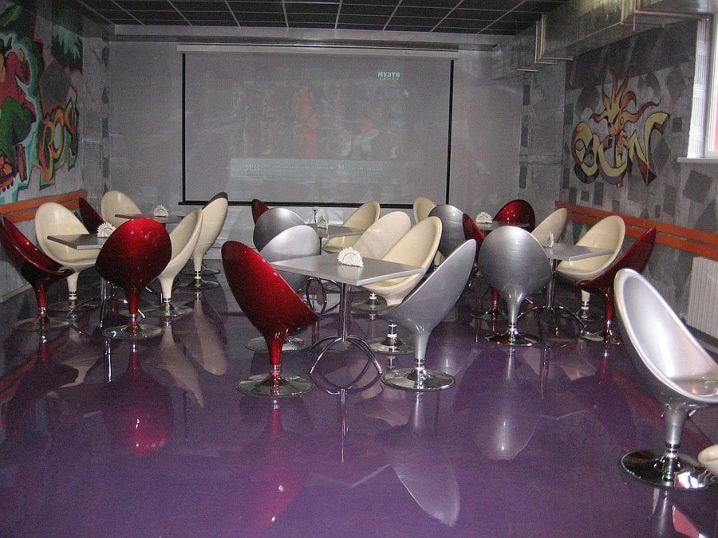Bulk floor: what is the consumption per 1 sq. M. m?

A popular question that unites many people who have chosen a self-leveling floor for their dwelling is an expense per 1 square meter m required material. How to accurately calculate the amount of the mixture per square meter? This will be discussed in this article.
Special features
Bulk floor, sometimes referred to as industrial, is a type of concrete screed, in the implementation of which apply self-leveling mortar.
A feature of this coating is high strength with a minimum thickness - no more than 3.5-4 cm. It is widely used both in shopping centers, sports complexes, at technical facilities - warehouses, workshops, and in ordinary apartments.
Today, more and more people prefer the industrial floor, despite the high price of materials and the considerable cost of work.
The reason for this are the numerous indisputable advantages of the self-leveling coating:
- durability - service life depending on the load is on average 30-40 years;
- flawless and fast adhesion to any base due to high adhesive qualities;
- absolute tightness that prevents contamination and dustiness of the base;
- aesthetics, a variety of designs;
- wear resistance;
- fire safety;
- impact resistance;
- non-toxicity;
- hygiene;
- seamlessness.
Undoubtedly, there are disadvantages.
These include:
- the need for preliminary work on heat and sound insulation;
- full vapor tightness;
- expensive, time-consuming, time-consuming preparation of the base for pouring;
- uncomfortable low temperature coating, providing for the connection of the "warm floor";
- high price.
Of course, there are more pluses. So the use of this technology is fully justified. The opportunity to save money still exists - you need to be careful in counting the numberexpensive materials, which include the calculation of the mixture per 1 square. m. Then for the surplus will not have to pay. It's time to take into account all the main factors and trust the proven formulas.
What influences the calculations?
First of all, the consumption of material per square meter depends on the type of mixture selected. There are polymer and dry coatings.
The first option is a two-component solution made of resin and epoxy hardener, produced in cans. The second is a powder based on a binder component, such as cement or gypsum, packaged in paper bags.
Types of polymer coatings:
- epoxy - tough, resistant to high temperatures and chemicals, but rather fragile;
- methyl methacrylate - susceptible to mechanical, chemical effects, but very resistant to freezing temperatures;
- polyurethane - elastic, reliable and durable;
- epoxy-urethane - elastic, high-quality coatings, are the most popular among buyers.
Consider other factors that affect the amount of consumable material:
- The correctness and quality of the preparation of the base.At this stage, it is necessary to evaluate the work surface for scratches and cracks. Then imperfections are smeared, after which dry and wet cleaning is performed. Next, the floor is carefully primed, at least in 2 layers, with the use of deep penetration solutions.
- Insignificance of coating deviations. With minor drawbacks, the tie can be low - only 5-8 mm. However, in some cases it becomes necessary to flood the floor to a height of 9-10 cm. The coupler is carried out using special beacons.
- The density of the material used.
Most often, professionals are guided by the following averaged data:
- for polyurethane compositions - 1.25-1.35 kg / l;
- for resin based materials - 1.35-1.5 kg / l;
- for acrylic cement mortars - 1.6 kg / l.
- Indicators of temperature, humidity.
- The total area of the room, calculated by multiplying the lengths of the two perpendicular sides of the room.
In order not to spend extra money, it is necessary, taking into account all these factors, to carefully count the number of bags required for the implementation of the tie.
Norm
Calculate the required amount of material can be at the rate of consumption.This universal indicator has a range of values from 1.3 to 1.8 kg per 1 m2. More accurate data can be obtained from the characteristics of the mixture and additional, including decorative, additives: dye, liquid glitter, etc.
Calculator
There is the following simplified calculation algorithm:
- Using the building level, determine the slope of the surface from a straight plane and calculate the difference in height at the corners of the room.
- Calculate the average by dividing the resulting figure by 2.
- Adding to the particular value of the minimum layer height, determine its thickness.
- On the packaging of the purchased material, find a list of recommended mixture costs per 1 m2, varying depending on the type of work - from 1 mm to 5 cm.
- Substitute your data and calculate the required amount of the formula:
X = (X1-X2): 2+ X3,
where X1 and X2 - the maximum and minimum height to the level;
X3 - the density of the consumable material indicated on the package;
X - permissible thickness of the filler layer.
At the final stage, it is necessary to use a calculation system based on the use of averaged density of the solution.
The formula is: G = S × X × P,
where S is the total area of the room, m2;
X is the thickness of the filling layer, mm;
P - the density of the solution, kg / l;
G - mixture consumption per square meter, kg.
Consider a situational task. It is necessary to fill the floor with an acrylic composition in a room with a total area of 60 square meters with a layer thickness of 2 cm.
According to averaged data, the density of acrylic cement mortar is 1.6 kg / l. That is, P = 1.6 kg / l; S = 60 m2; X = 20 mm. Consequently:
G = 60 * 20 * 1.6; G = 1920 kg.
It turns out, to fill this conditional room, you need 1920 kg of cement. This value can be detailed and find out the exact number of packages of the mixture. As a rule, 1 bag contains 25 kg of substance, that is:
1920\25 = 76, 8
The private is rounded to the whole, and it turns out that we need to purchase 77 bags of dry cement mix.
It is worth noting that if over the screed, you plan to apply a transparent topcoat or varnish, then the calculation of these materials should be done separately, since they have a completely different density.
How to cut?
Bulk floor in an apartment or office - the pleasure is not cheap. Moreover, the high cost differs not only the mixture itself, but also the materials accompanying it and the work of the masters. Therefore, it is important to find the best way to rationally reduce costs.
There are the following methods to reduce costs:
- Underlying floor technology. It is used when working with polymer coatings and consists in that quartz sand is poured onto a wet concrete screed. As it dries, its excess is removed, and the ready mixture is poured on top.
- Using special tools. With the help of a notched and wide spatula, a needle roller, and also studded nozzles on shoes, it is much more convenient to evenly distribute the prepared material.
- Dressing. Applying a decorative finishing layer or glossy varnish significantly reduces the cost of polymer or dry components, improves the aesthetic properties of the coating, making it exclusive.
- Choosing a reliable manufacturer. Now on the market are many goods of different prices and quality. However, do not be tempted by excessively low prices and discounts. First, you should read the reviews of other consumers, get acquainted with the reputation of the supplier.
- Self fill floor. It is recommended to perform the installation yourself only if you have basic skills in handling the tool and working with construction materials.
Manufacturers
Going to the store, arm yourself with our list of trusted manufacturers:
- Knauf - the German mark, popular in the world, differing in high indicators of quality, the rich range. However, the high price of the goods of this company does not contribute to their distribution in the Russian market.
- Self-leveling material Ivsi It is widely represented in stores by a multitude of specialized lines and is in steady demand.
- Quick-drying leveler Bergauf it is not only distinguished by decent quality, but is also ideal for beginners in the field of flooring.
- You also need to pay attention to the products of the Russian brand. "Bolars"that meets all European standards and has an affordable price.
- The most budget option - domestic self-leveling floor "Hercules". Its main advantage is low cost. Quality indicators are low.
Among manufacturers of polymer coatings should be noted such brands:
- Knauf and Ivsi already known, the only drawback of which is the need to wait for the goods when ordering through the catalog.
- The group of companies "Eunice", producing a huge number of names of building materials.As for epoxy mixtures, the most famous "Horizon". It has impressive features and an affordable price.
- Another popular brand is Elakor PU. However, here you need to take into account: before pouring the room, the polyurethane leveling agent is mixed with hardener and color base, after which the mixture is applied with a layer of at least 10 mm.
- The domestic composition "PRASPAN", which includes polyester resin, as well as the Swiss equivalent "SIKA" and the Greek product "Giperdesmo", are well suited for self-pouring.
Professional Tips
- If you want to create an extraordinary exclusive interior in your home, then you will certainly like the self-leveling floor technology that allows you to turn the floor into a real work of art.
- Try not to choose glossy and varnished coatings for rooms with high mechanical stress, such as a kitchen, children's room or a corridor. The fact is that during intensive use there will be scratches on the floor, it will quickly lose its original appearance.
- We should not forget that such a floor requires special care.Periodically it should be polished, and once a week to process a special colorless composition.
- It is recommended to make bulk floor with 3D effect only in rooms with one exit, so that the image looks voluminous. If you look at it from a different angle, all you see is a flat picture.
- Do not be afraid that the smooth coating will be slippery. Such options are quite safe to use.
- The technology can be used even for the usual leveling of the surface under the laminate or tile. It turns out perfect.
- You should not be limited to stereotypes, the opinion of incompetent inhabitants of Internet forums. Self-leveling floors are intended for wide use in the industrial, commercial sphere, in cafes, restaurants, in private houses and office buildings.
In the next video you can see the technology of mounting self-leveling 3D floors with your own hands.
